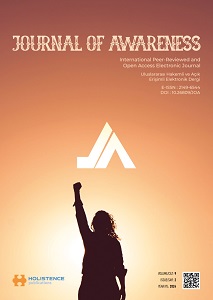Mekânsal kalite unsuru ve kullanıcı beklentileri: Taksim Meydanı ve çevresi
Spatial quality element and user expectations: Taksim Square and its surroundings
Author(s): Bilge Ulusay AlpaySubject(s): Architecture, Sociology, Policy, planning, forecast and speculation, Rural and urban sociology
Published by: Rating Academy
Keywords: Urban Space Quality; Pedestrian Areas; Urban Equipment Elements; Taksim Square;
Summary/Abstract: Experiences and social relations in the public spaces of the city constitute the production of urban culture. These places, which bear traces of the city’s past, are the memory of the society. However, with rapid urbanization and regulations regarding increased vehicle use, pedestrians have been put in the background, and pedestrianization efforts to solve this problem have gained momentum worldwide. In this process, design principles in pedestrian spaces were determined and it was aimed to eliminate the physical, perceptual and socio-psychological problems of pedestrians. It is important that the place is pedestrian-oriented so that people feel better in the place and that the time they spend is of good quality. The aim of the study is to investigate how Taksim Square and its immediate surroundings are perceived by users and which spatial elements come to the fore by examining the factors that direct the design of squares and pedestrian axes, quality criteria and design principles of equipment elements. In this context, data analysis was carried out through literature review, which is a research method for obtaining qualitative data and spatial quality, and observation and survey (questioning) methods were used to obtain quantitative data. In this regard, factors affecting user satisfaction were investigated and open-ended questions were asked to measure user perceptions of the space. As a result, urban design principles of Taksim Square and its immediate surroundings were evaluated in terms of spatial quality. Therefore, it was observed that pedestrians were negatively affected both physically, perceptually and psycho-socially, and considering the data obtained, it was determined that the equipment elements were insufficient. It is thought that this study may contribute to urban design projects planned to be carried out in the region to improve the quality of life and space.
Journal: Journal of Awareness (JoA)
- Issue Year: 9/2024
- Issue No: 2
- Page Range: 251-269
- Page Count: 19
- Language: Turkish

